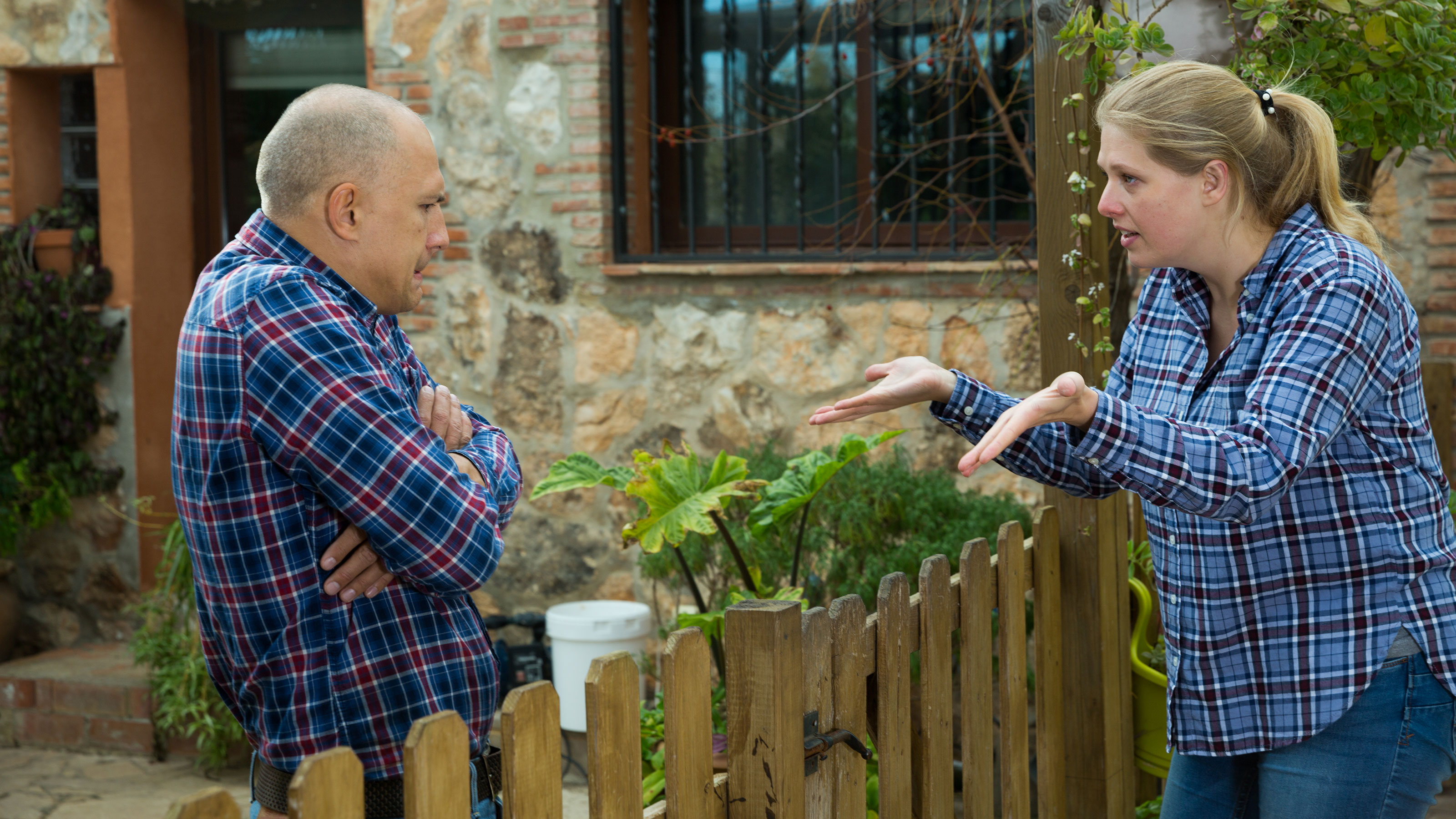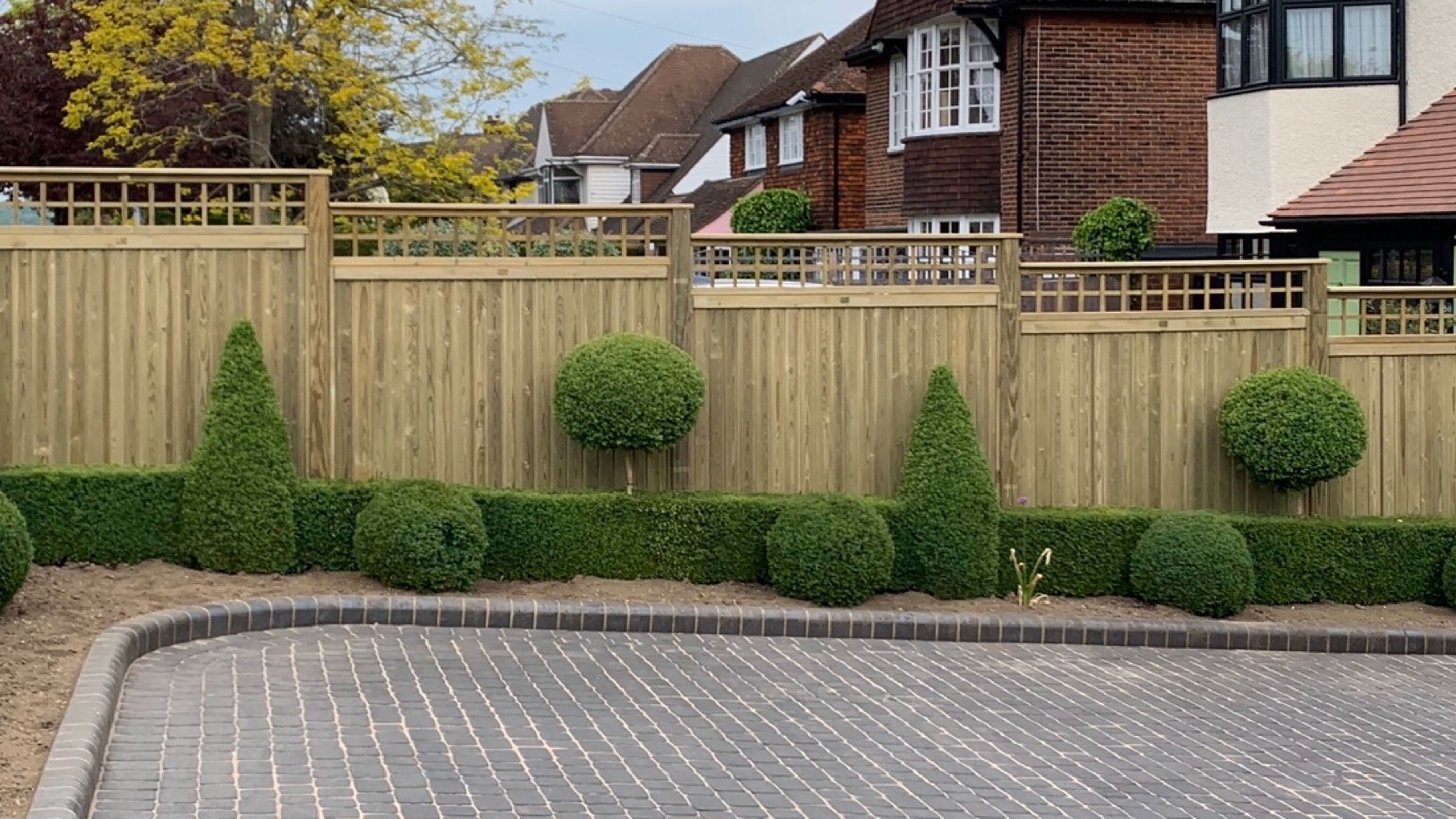How do I know which side of the fence is mine?
Neighbourly quarrels left you asking 'which side of the fence is mine?' Fear not, our quick guide is here to explain everything you need to know to avoid boundary disputes

Which side of the fence is mine? If you are looking for an answer to this question then you have come to exactly the right place.
The world of fence rules can be a confusing one leading to all kinds of trouble for homeowners, such as disputes over who owns what, shirking of maintenance responsibilities and even issues over planning permission when it comes to making certain changes.
To add to the issue, there is, unfortunately, no one-size-fits-all answer and there will often be no records held of who boundaries belong to. That said, there are ways of finding out once and for all what belongs to who as well as coming up with formal agreements to set things out more clearly — and that is what we will be explaining here.
How can I find out which side of the fence is mine?
When looking out into your garden you may have fences to one or both sides of your garden, separating it from that of your neighbours. In the case of fences, it is usually not until damage occurs, maintenance is required or you decide to upgrade your garden fence ideas that people begin to ask who is responsible for the upkeep.
“The basic position is, a garden boundary – be it a fence or hedge or a wall – is shared jointly between both sides, unless the deeds say otherwise," says Simon Rix, planning consultant at Planix.UK . "If the deeds are silent, then it’s shared, which means both neighbours are jointly responsible for the upkeep and repair of the boundary.
"If the deeds say something specific, then that’s the situation, i.e owned jointly, by one side or the other. The exact location of a boundary is not necessarily indicated by deeds or by the land registry plans," continues Simon. "Usually these make it clear, but there’s only so much you can tell from small maps. The exact position on the ground will be reflected by the reality of the structures there (boundary features) and/or long-standing usage. That said, some people do try to move fences when they shouldn’t, so there is a mediation process if any boundary disputes can’t be resolved amicably. It should be noted that red line or even blue line boundaries in planning application plans are not determinative of what the boundary actually is, as mistakes can be made by applicants, and few detailed checks on exact measurements are made by councils.”
Where can I see which side of the fence is mine on property deeds?
If you are lucky, your property deeds should be able to reveal which boundaries you are responsible for — so handy when looking into planning permission for fences.
Take a look at your deeds. They should show a scale plan of your home and any surrounding properties. If the boundary lines are highlighted with a T-shaped symbol you are in luck. The tip of the 'T' should be pointing at the property that is responsible for that boundary.
In many cases deeds will also help to establish who is responsible for the fence at the end of your garden.
Where can I find out who is responsible for a fence?
In many cases your property deeds will be able to help establish who is responsible for a boundary fence. If you didn't get a copy of this when you bought the house, don't worry as you can request documents online via the HM Land Registry website.
On this site you will also be able to find out if the property or land in question is registered (it usually will be) and download a copy of the title register and title plan which should display the boundaries of your property. That said, even if the boundaries are shown on the plan, it is not always stated who owns them.
If the deeds do not state who the fence belongs to, there are some other useful factors that can point to ownership, although some may depend on the fence types you are dealing with.
"Typically, the rails on a fence are installed facing into the property giving the neighbour the 'good' side of the fence," say the experts at Jacksons Fencing. "By doing this it adds a layer of security as there are no rails on the outside of the property for someone to use to climb the fence. This is usually repeated with the neighbour on the other side to ensure that each home has a 'good' and a 'bad' side of the fence."
Other things to look out for include:
- Upright fence posts supporting the fence will usually be on the side of the owner of the fence. However, this will not always be the case. "Our posts are predominately slotted so the posts don't sit on one side, they are in line with the panels," point out Jackson's Fencing.
- The side on which fence struts sit will usually face into the owner's garden.
- Where wooden panels are placed between posts, it is usual for the external face of these posts to be positioned on the owners land at the boundary.

What is a boundary agreement?
In most cases it will be possible to simply speak to your neighbours and have a discussion about who owns what or who is responsible for the upkeep of boundaries. Often, neighbours agree on joint responsibility for shared boundaries.
However, in cases where this, for whatever reason, can't happen, it is possible to create a 'boundary agreement' with your neighbour. This can set out where boundaries are between two properties as well as recording who is responsible for their maintenance. Once you have both agreed on it you will need to record the agreement by filling in an application to change the register for the property, including a copy of the agreement along with a fee of £40.
Get the Homebuilding & Renovating Newsletter
Bring your dream home to life with expert advice, how to guides and design inspiration. Sign up for our newsletter and get two free tickets to a Homebuilding & Renovating Show near you.
Natasha was Homebuilding & Renovating’s Associate Content Editor and was a member of the Homebuilding team for over two decades. In her role on Homebuilding & Renovating she imparted her knowledge on a wide range of renovation topics, from window condensation to renovating bathrooms, to removing walls and adding an extension. She continues to write for Homebuilding on these topics, and more. An experienced journalist and renovation expert, she also writes for a number of other homes titles, including Homes & Gardens and Ideal Homes. Over the years Natasha has renovated and carried out a side extension to a Victorian terrace. She is currently living in the rural Edwardian cottage she renovated and extended on a largely DIY basis, living on site for the duration of the project.

